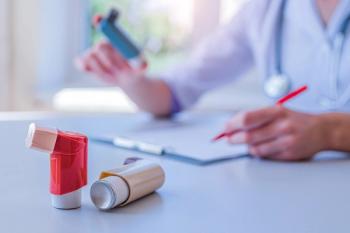
What you don't know about car seats can injure or kill your patients
Child safety seats are ubiquitous in modern America — and many are used in dramatically unsafe ways. Used incorrectly, safety seats can harm.
Child safety seats are ubiquitous in modern America - and many are used in dramatically unsafe ways. Used incorrectly, safety seats can harm.
Putting a rear-facing safety seat in the front seat, for example, is asking for trouble. When the air bag deploys, it can crack the back of the safety seat and fracture a baby's skull.
"It's not enough to use a safety seat - you have to use it correctly," said Marilyn Bull, MD, a developmental pediatrician at the James Whitcomb Riley Hospital for Children at the Indiana University School of Medicine. "Proper use of a car seat is not instinctive maternal behavior. You have to learn how."
Bull became concerned about automotive safety by way of her original interest in developmental difficulties. It's a small step from taking care of children with disabilities to preventing disabilities, she told pediatricians on Monday at the AAP 2004 National Conference and Exhibition. Automobile accidents, she noted, are the leading cause of childhood epilepsy.
Child safety seats have had a dramatic impact on pediatric automobile fatalities. Among children to 4 years of age, US auto accident deaths have fallen from 4.5 for every 100,000 children in 1975 - before child safety seats were introduced - to 2.41/100,000 in 2002. That's a drop of 46%, according to data from the National Traffic Safety Administration.
But the fatality reduction is less remarkable among older children. For children 5 to 9 years, auto fatalities are down 22%. Among 10-to-15 year-olds, fatalities have fallen by 28%. One reason for this disappointing picture, Dr. Bull said, is improper use of safety seats.
Overall, 82.6% of child safety seats are misused. The most critical problem - loose harness straps in infant seats (57.3%) and forward-facing convertible seats (58.9%) - is also the easiest one to correct.
"You can make a huge difference in child safety with very simple counseling," Dr. Bull said. "Correct safety seat use is one of the most effective interventions you can make."
Dr. Bull urged pediatricians to offer their patients five basic rules for safer car travel:
- Air bags can be dangerous to children; always place children in rear seats
- Infants should ride facing toward the rear of the vehicle until they are at least 1 year old and weigh at least 20 pounds
- Adjustments must be made when convertible seats are changed from rear- to forward-facing
- Safety seats must be secure in the vehicle and the child must be secure in the seat
- Children are safer in child safety seats than in regular car seats as long as they fit
Newsletter
Access practical, evidence-based guidance to support better care for our youngest patients. Join our email list for the latest clinical updates.







